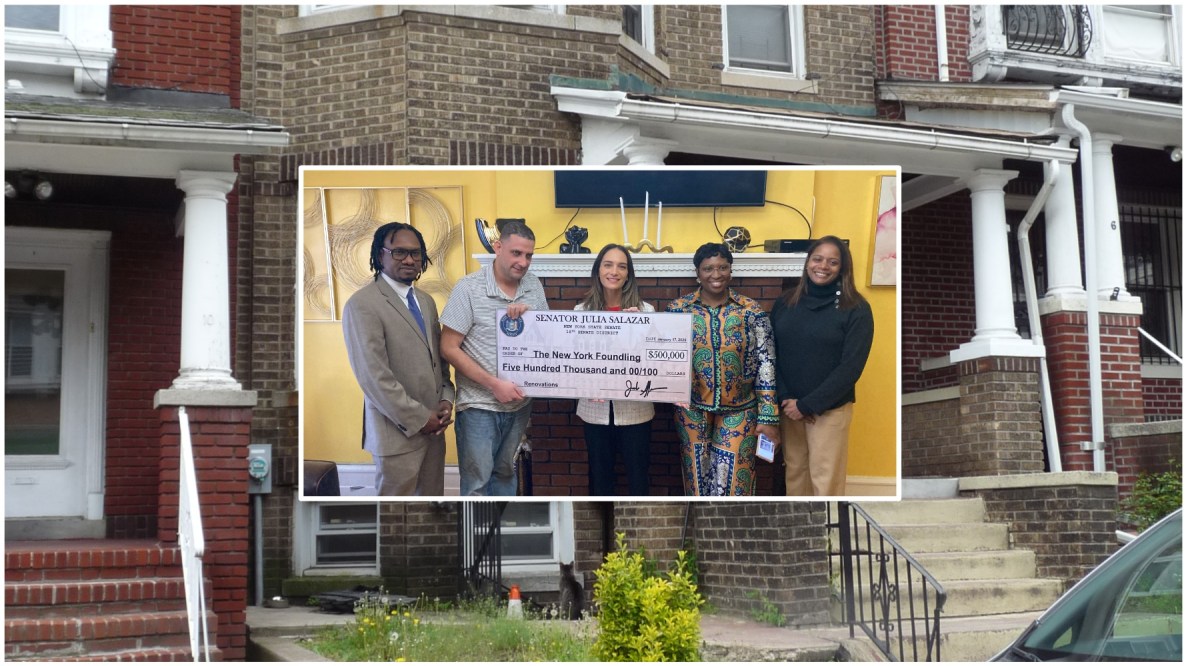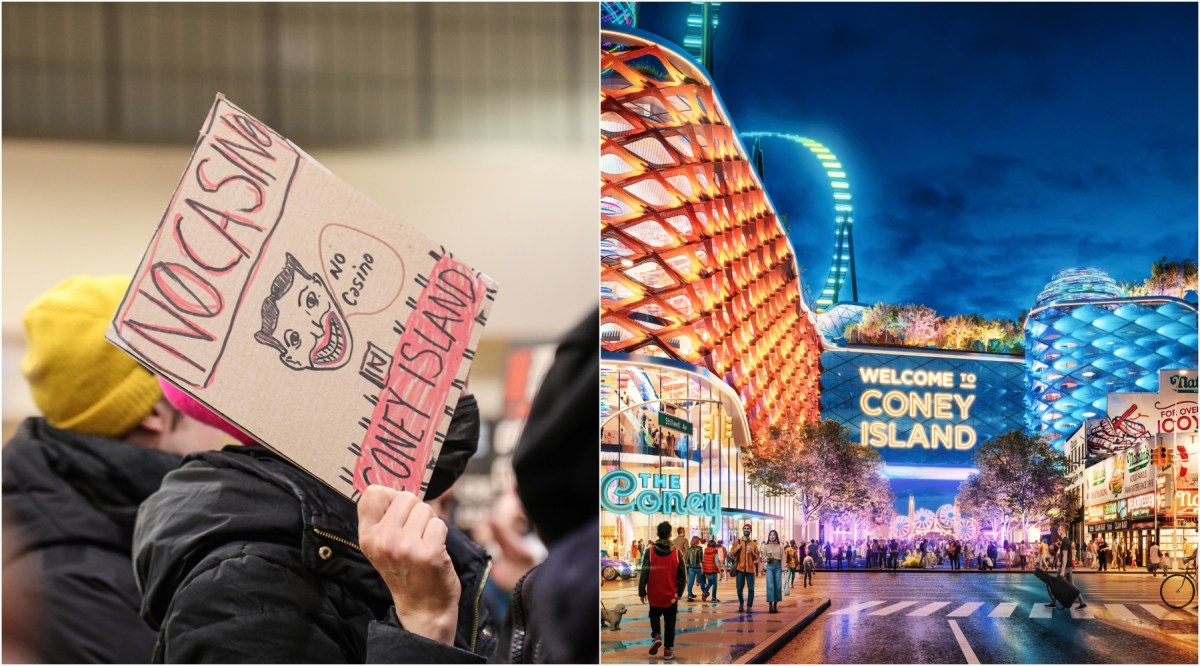BY MICHELE HERMAN | On the occasion of the Integral Yoga Institute’s 50th anniversary this year, I was invited to talk with general manager Chandra/Jo Sgammato — cross-legged on the floor in a yoga studio, of course — and then take her morning class.
I had attended a fair number of classes and activities at the institute over the years and shopped in its stores for decades, and thought I already knew the place. Over the course of a wide-ranging conversation with the wonderfully approachable and down-to-earth Sgammato, I learned that my local yoga studio is an extremely venerable and influential institution.
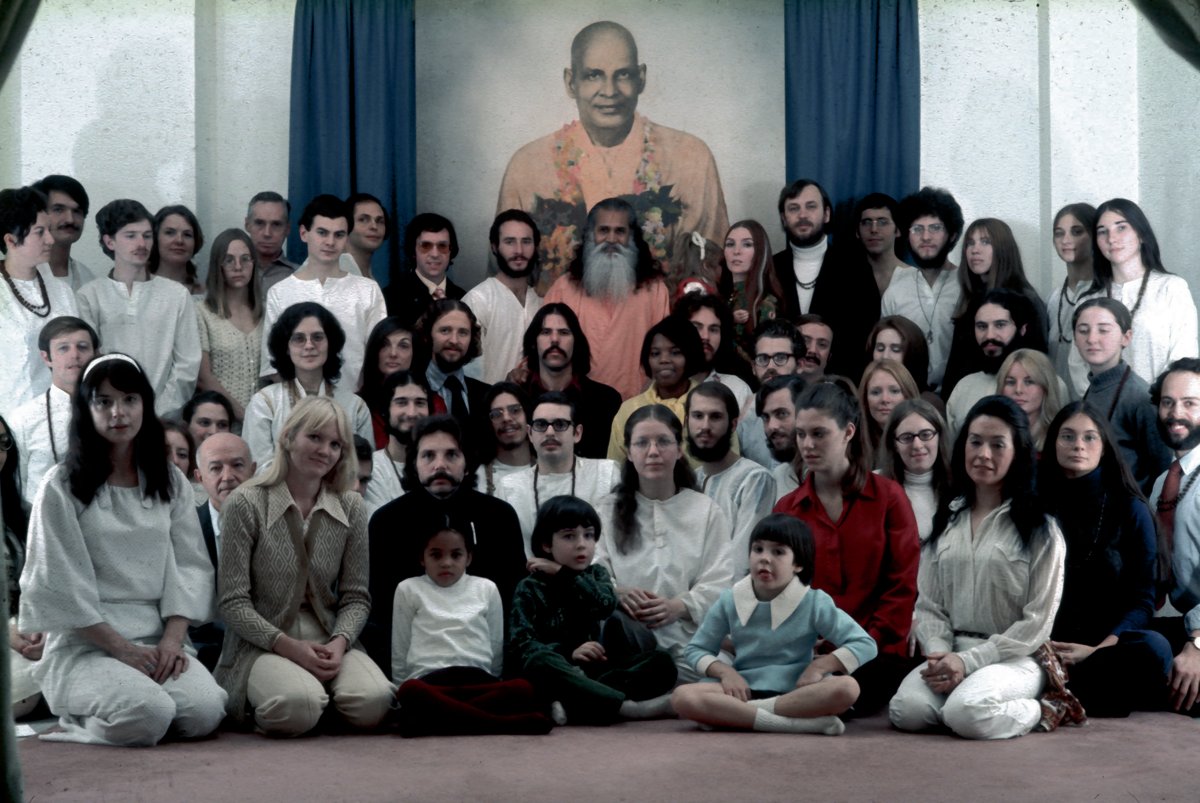
At a time when the Village is shedding venerable, influential institutions at a rapid rate, IYI is not only thriving on W. 13th St., it’s an international powerhouse with 30 centers on six continents. Basically, IYI was so far ahead of its time when it opened in 1966 that it took the world a long time to catch up.
In addition to the health-food store (which in March made room for the apothecary products that used to be in a separate shop across the street) and bookshop, the institute runs more than 100 hatha yoga classes a week. Hatha, by the way, means “hot and cold” and is an umbrella term for most kinds of yoga.
“I like to say that we have classic, authentic yoga for every age, body, ability and stage of life,” Sgammato explained.
Other programs include meditation instruction, lectures and classes that span ancient practices (kirtan chanting) and modern psychology (yoga-based cognitive behavioral therapy for anxiety). The institute also has one of the modern world’s oldest — and most rigorous — yoga teacher training programs. The wellness spa on the sixth floor offers acupuncture, various kinds of massage and healing.
Beyond its orange stucco walls in the Village, IYI has teaching centers on every continent except Antarctica, and an ashram called Yogaville on 1,000 acres south of Charlottesville, Virginia.
Everything IYI does is based on the teachings of founder Swami Satchidananda (1914-2002). He’s the bearded fellow whose photo you may have seen around the building in the center of IYI’s lotus symbol. The 12 petals represent the major religions of the world coming together peacefully in search of truth.
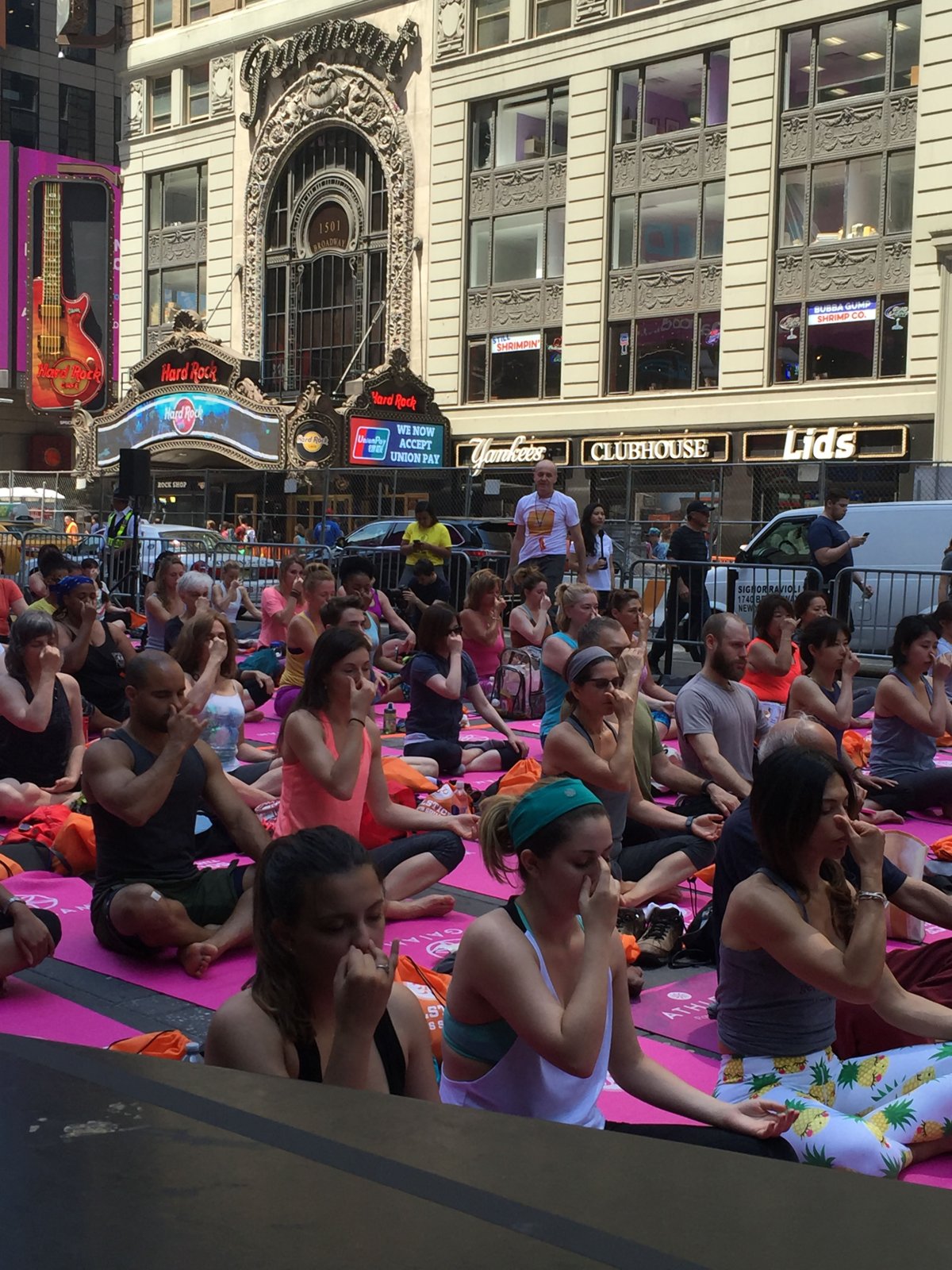
IYI takes its teacher training very seriously. Even after 250 hours of training, prospective teachers have to teach a sample class and demonstrate their readiness and character. What’s more, they are not paid. There are currently about 150 active local IYI teachers, as well as 5,000 around the world.
Sgammato stresses the nonprofit aspect of IYI.
“We’re not here to get rich,” she said. “Swami used to say, ‘Yoga is free; we just charge something to pay the electric bill.’ ”
Classes are $17, with “3 classes for $30” multi-class cards (with no expiration date) for new students. There are discounts for seniors, students and veterans, and a work-exchange program in which volunteers get a free pass for every 90 minutes they put in around the building.
The institute offers special classes for veterans, 9/11 first responders, new mothers and the elderly. It is also an official New York City Department of Education vendor. Sgammato is particularly proud of her ongoing work with two local high schools, James Baldwin and City-As-School.
“We give the kids lessons on nutrition, getting along, controlling anger,” she said. “We watch the kids transform. Sometimes the most angry and resistant get the most out of it. They begin to understand there are alternatives to lashing out.”
Despite the association with New Age mysticism, yoga is founded on hard, irrefutable logic.
“Yoga teaches us that we get scarring because all people are raised by imperfect people, who were raised by imperfect people,” Sgammato explained. “The scars never go away and you can’t change what happened. Yoga teaches you to replace the bad with the good. You have to do it regularly in all earnestness over a long period of time.”
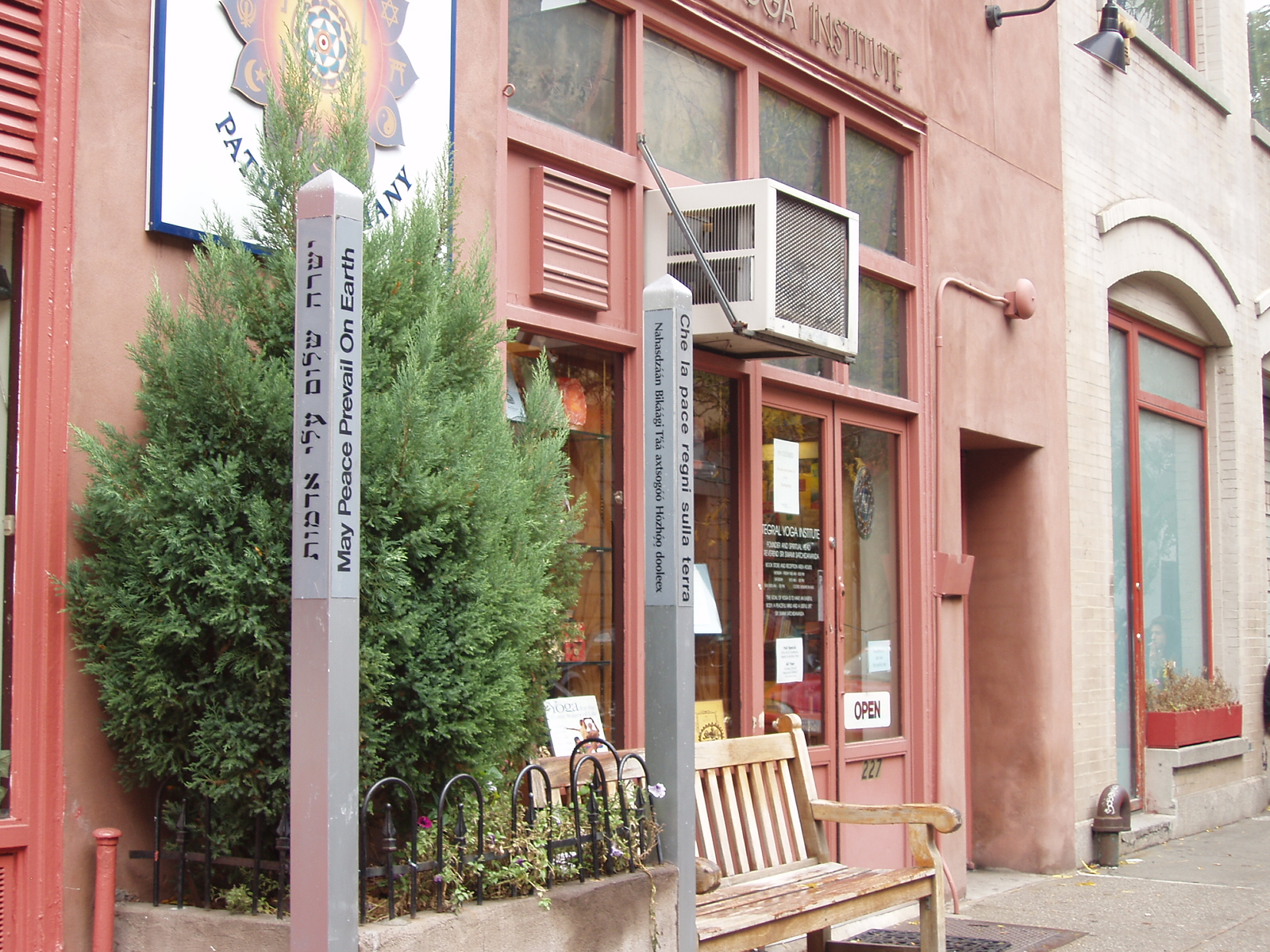
What accounts for IYI’s longevity? The institute is built on two strands of great wisdom. The first stretches back orally more than 5,000 years from the swami to his East Indian forebears, who wanted to spend their lives sitting in quiet contemplation, and came up with a system of poses to make all that sitting less uncomfortable. The second piece of wisdom is Western: If you want to last in Manhattan, buy your building.
IYI bought the W. 13th St. building in 1970, when the West Village was, to put it politely, a less coveted destination. If you have taken a class in the Rose Studio, one of several in the building, you may have noticed the original Peter Max paintings on the walls. The artist, whose psychedelic work was practically the official logo of the 1960s, was also largely responsible for the founding of the institute.
As Sgammato tells the origin story, Max met Swami Satchidananda in Paris through a mutual acquaintance and began studying with him. Before long, Max told the swami he had to come to America. Why? asked the swami. Max replied, “America needs you.” Why? asked the Swami again. Max said, “Because everyone in America is trying to feel the way I feel now, but they’re doing it in the wrong ways.” The swami agreed to come for three days.
When he arrived, he said to Max, “So where are all these people who need me?”
Max quickly gathered everyone he knew to his Upper West Side apartment. Within a few weeks, hundreds of people were coming. The swami’s visit stretched and led to more visits. In 1969, he gave a talk that filled Carnegie Hall, and then the opening address at Woodstock. The fledgling institute expanded to fill several apartments, at which point the building management said, enough already.
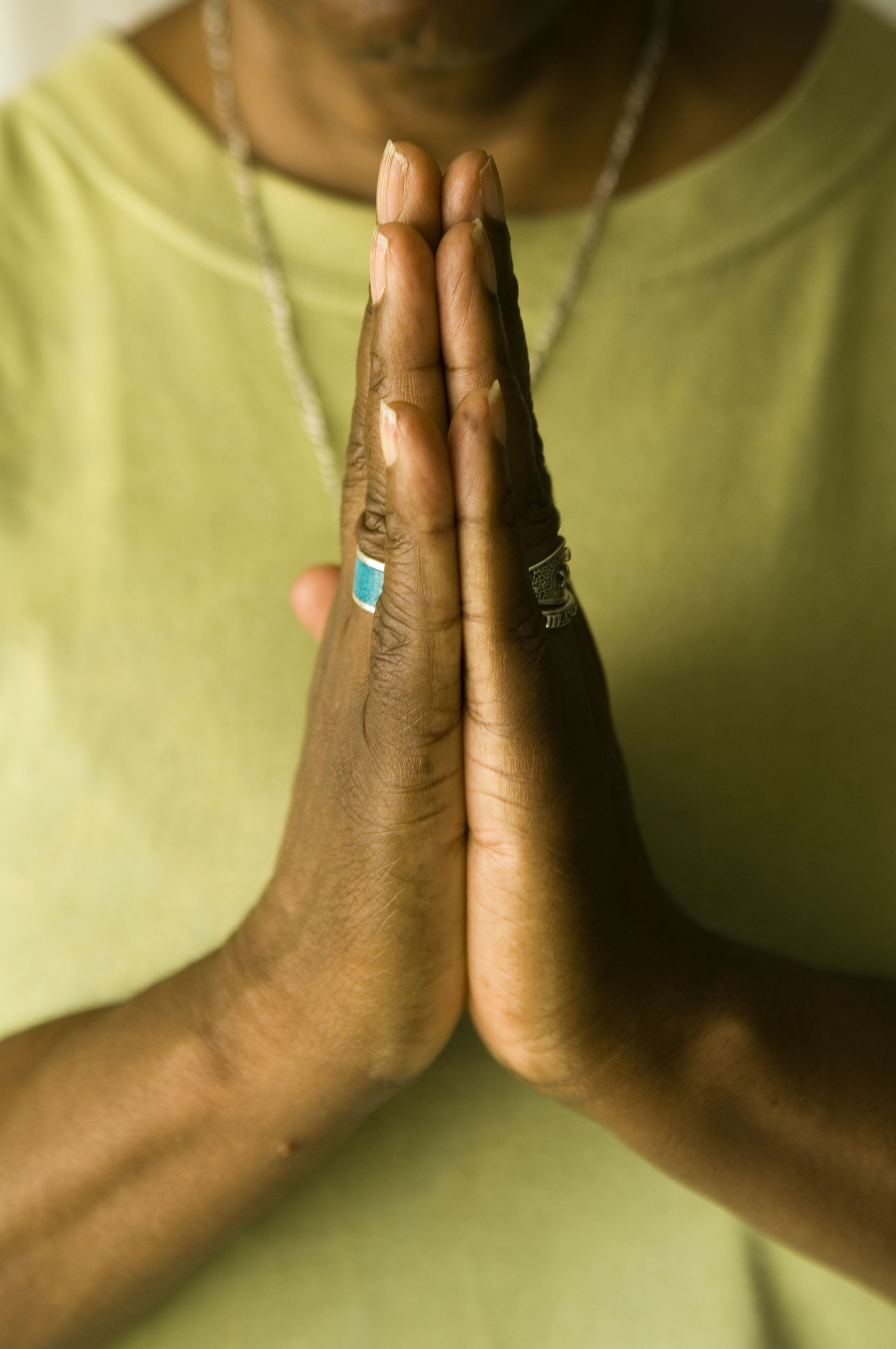
Much of the yoga in the U.S. can trace its origins straight back to IYI.
“In the ’70s we were one of the only places in the city,” Sgammato said. “We don’t mind taking a little credit for the fact that yoga is everywhere.”
The institute’s basic class is still the one created by the swami.
“It’s a very specific sequence to oxygenate the organs, stretch and tone and make the joints more flexible,” she explained.
“Why do it?” she asked. “The poses are easy to learn and do. The profound benefits far outweigh the difficulty. There’s never any pressure. It’s welcoming and accessible. I can give you a list of 50 other benefits, but the main reason is that you’ll feel good.”
Sgammato’s class that morning happened to be in the Rose Studio. I made sure to admire the artwork, and then let the yoga do its work. By the end of the hour, my mind and body were much more comfortable places to inhabit, just as the swamis experienced 5,000 years ago. If that’s not incentive enough to try a class, bring this article with you, and you will get a free class and a 20 percent discount at the food store.
For more information on the Integral Yoga Institute, call 212-929-0585 or go to iyiny.org .






